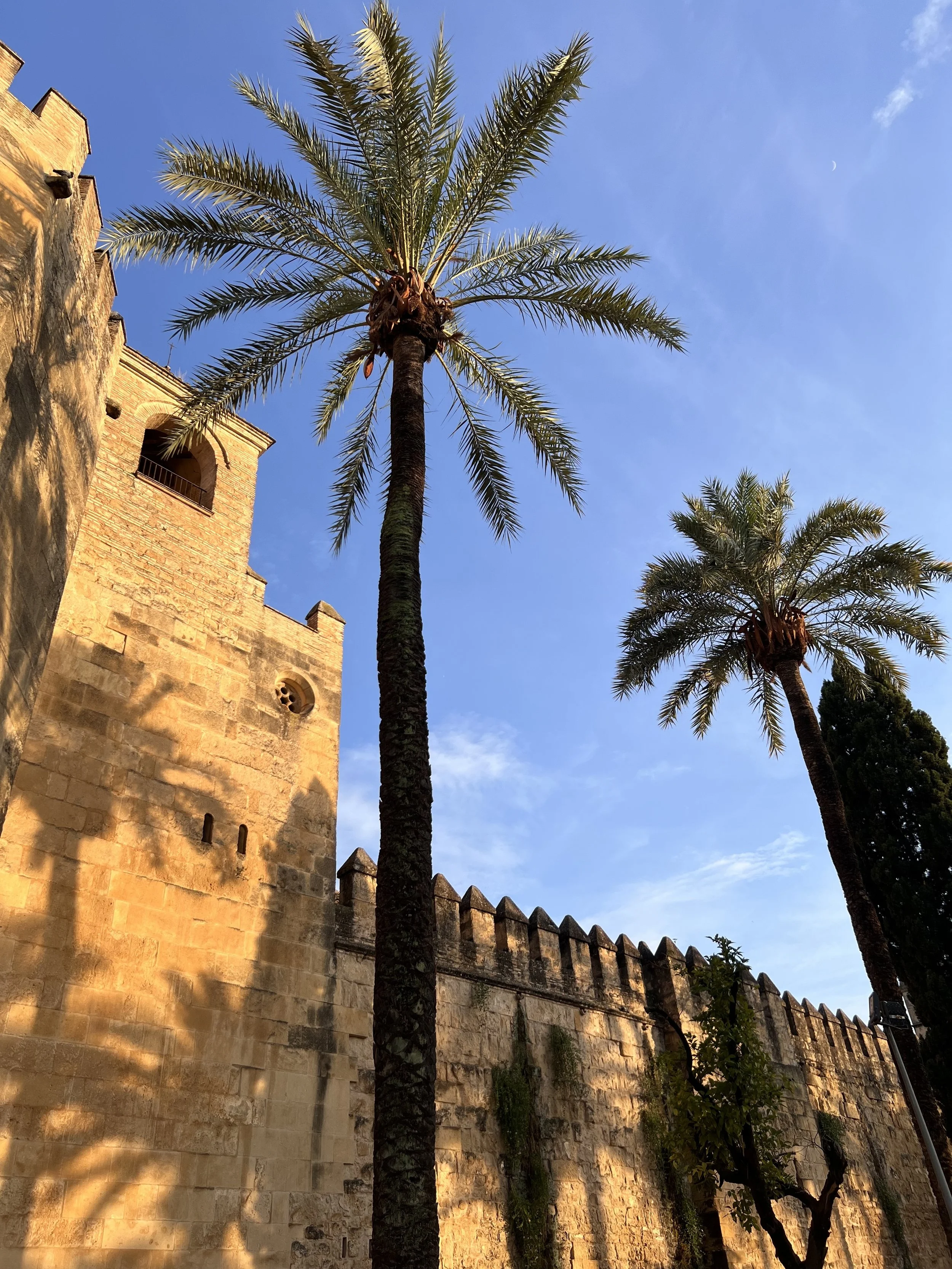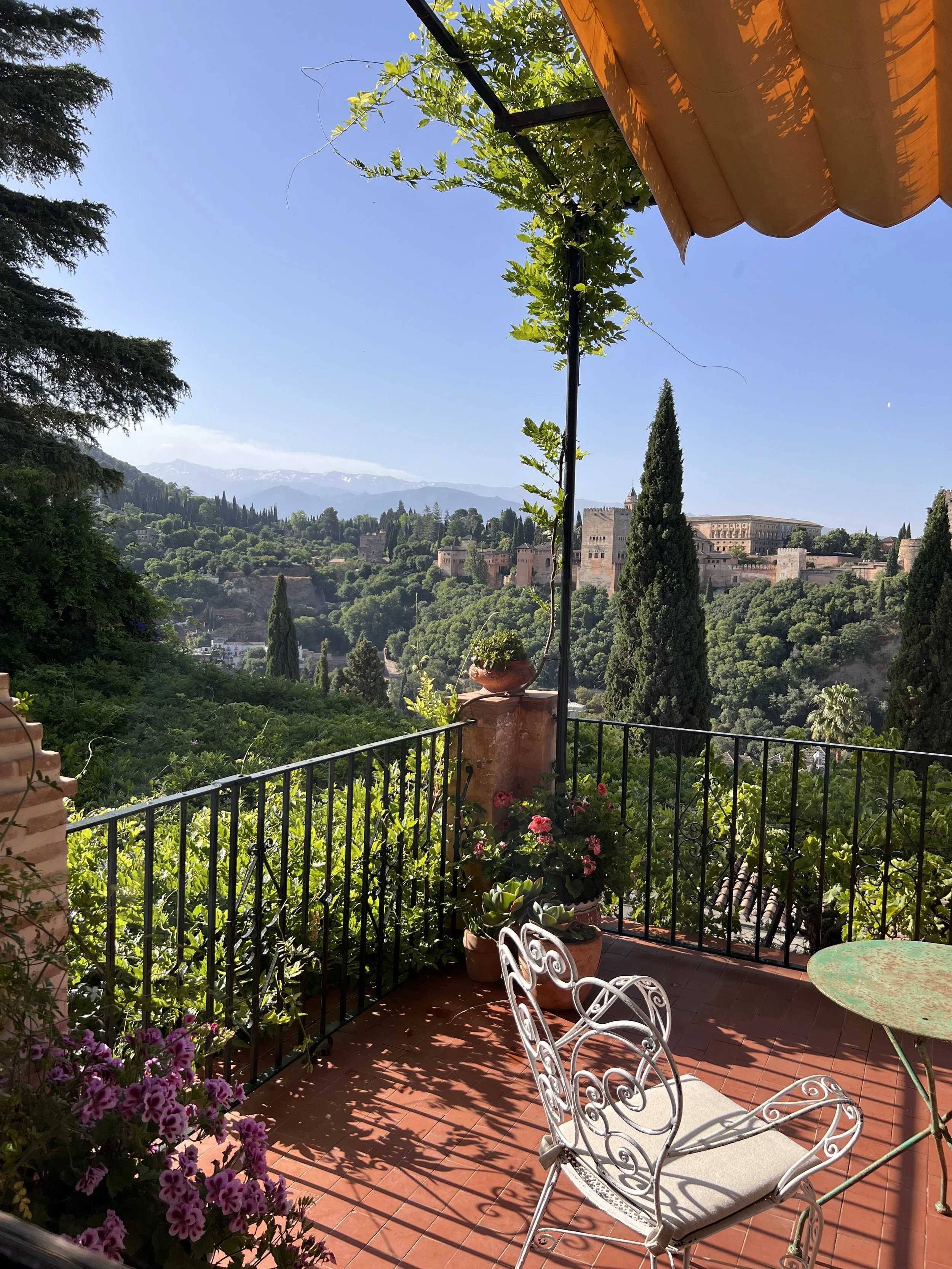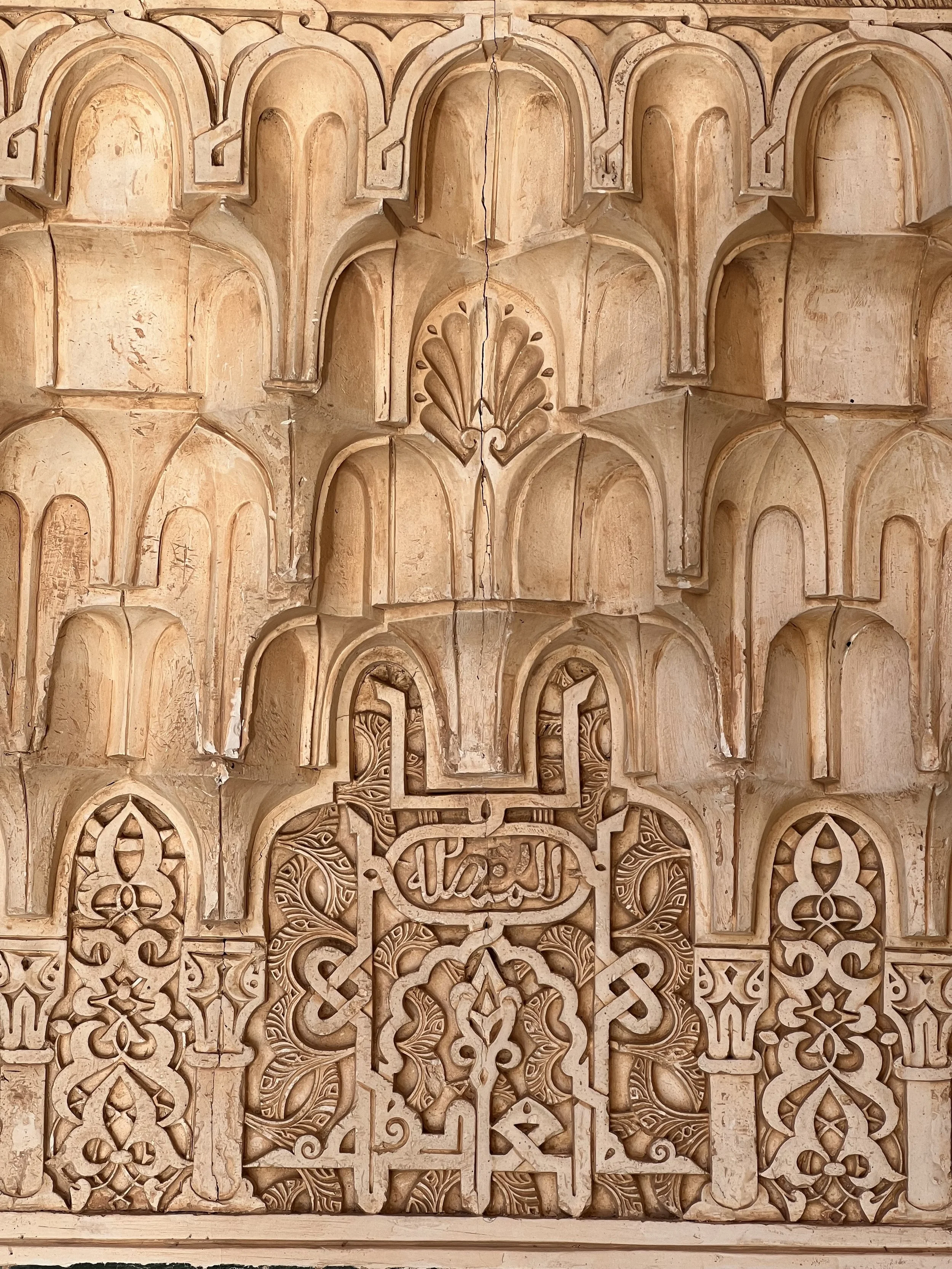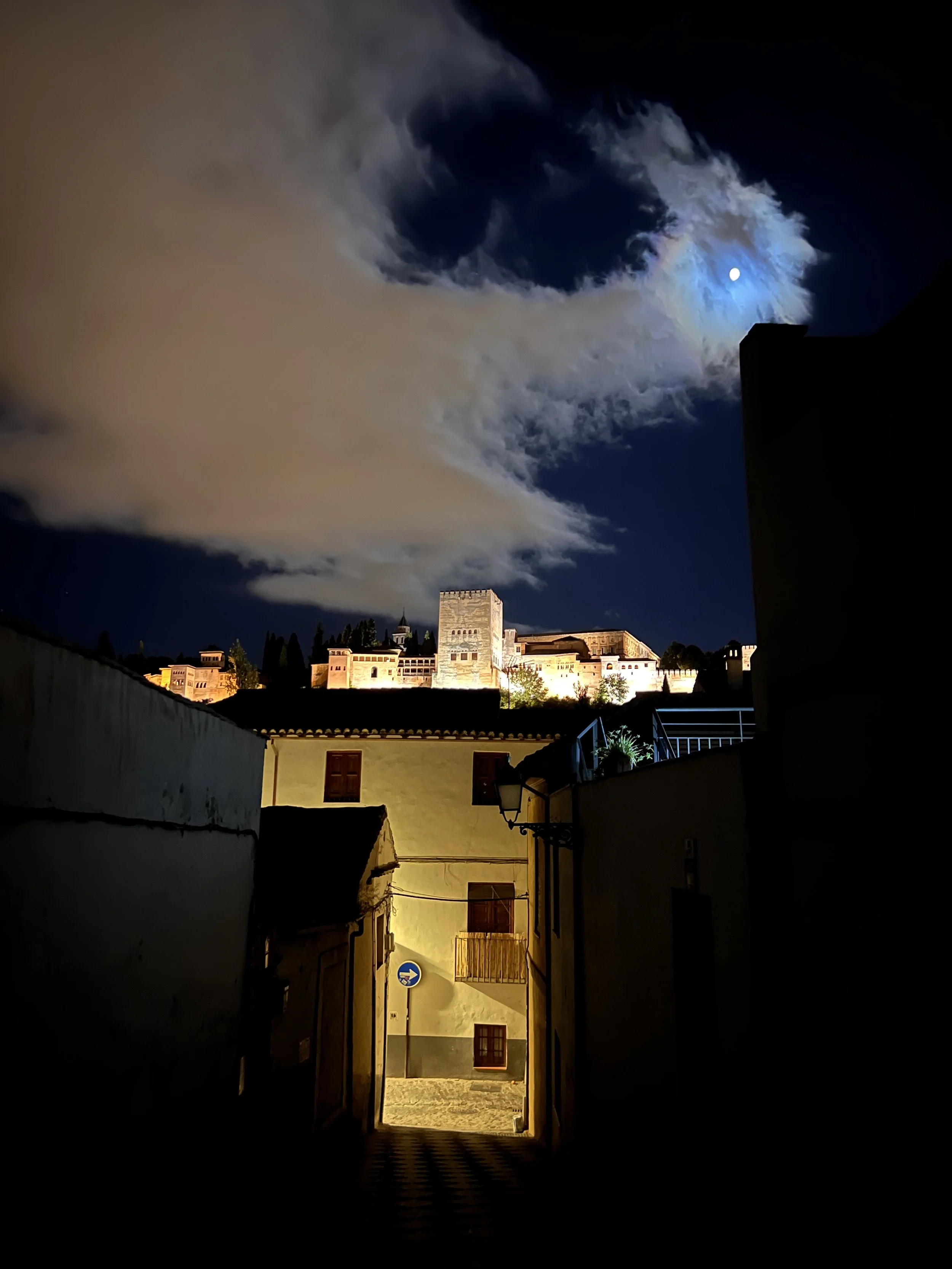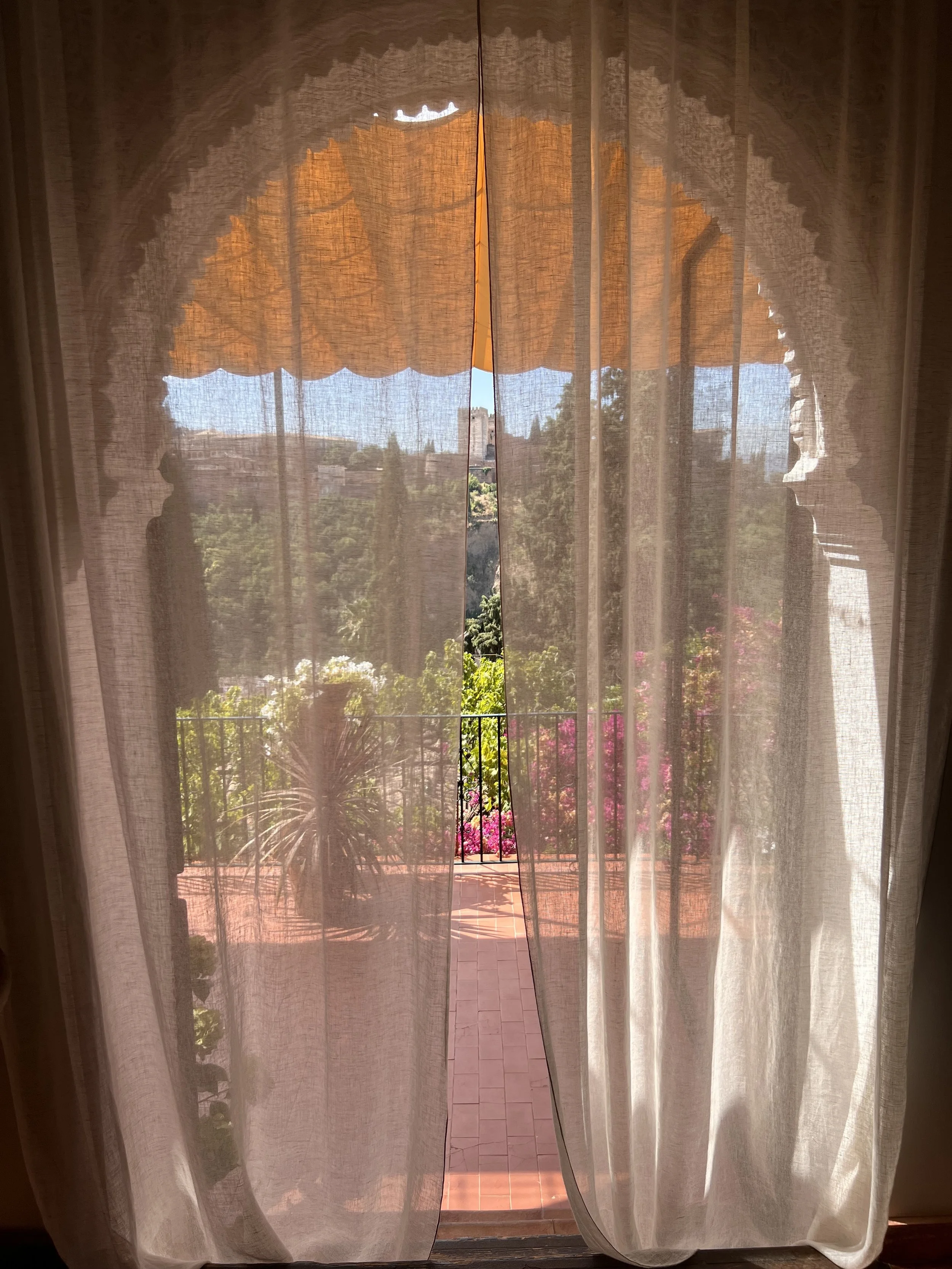Alandalus Unveiled: A Quick Journey to the Last Kingdom of Granada
Granada
If you know where to look and how to feel, the boundaries between your physical existence and a celestial presence begin to blur. You find yourself in a sublime space, questioning whether you are human or an integral part of the Alhambra's forest. Are you the water flowing through the river, or the light illuminating the Arabian poems etched into the Alhambra's walls?
Have you ever found yourself seated at El Huerto de Juan Ranas or the Mirador de San Nicolas, and wondered what is this all about? Is it merely another castle from the Middle Ages? Who built it? And why? Allow me to shed some light on its intriguing history..
The tale unfolds in the year 711 CE, when Musa ibn Nusair conveyed to the Caliph Walid bin Abdalmalik, the sixth Umayyad caliph, the potential of further expanding the empire into the Iberian Peninsula. In those times, the world was defined not by countries with fixed boundaries, but by sprawling empires—the Roman, Greek, and Persian dominions. The empire mindset was the norm; to expand one's territory was a matter of survival, for if you did not grow, another empire would surely consume you. Within this context, the Arabs, newly united by the divine message of Islam, saw expansion as both a natural and necessary course. This profound revelation not only unified them but also bestowed upon them a purpose: to partake in the grandeur of their age and to disseminate their faith.
Let me take you a step backwards, after the passing of the Prophet Mohammad (صلى الله عليه وسلم) he left behind him a caliphate, as in a succession that was democratic, there was Abu Bakr Alsaddiq, Omar bin Alkhattab, Othman bin Affan, and Ali bin Abi Talib. This utopian system was starting to get turbulent and Muawiya bin Abi Sufyan (bin Umayyah) took control and decided to make it an Umayyad Empire and have the succession from his lineage. Muawiya was from a tribe from Makkah, but during the caliphate of Omar he was assigned as prince of Damascus, and so when Muawiya became the first Umayyad caliph he moved the capital from Madinah to Damascus, shifting the political heart of the empire. The empire he built was the largest empire in history and the strongest, it reached China from the east and Spain and Portugal in the west. Because of this expansion and unity under one empire, the knowledge sharing was easy and the empire was extremely civilized and complex.
Going back to 711 CE, Musa ibn Nusair wrote to the sixth Umayyad caliph, describing the Iberian Peninsula as sparsely populated. He explained that the Visigoths, who had been expelled from the Roman Empire and came from Central Europe, were wreaking havoc upon the Iberians—a people themselves a mix of earlier conquests by Phoenicians and other groups. Over the past century, the Visigoths had failed to gain support, not only among the other inhabitants but also within their own ranks. The caliph, concerned for his people’s safety, replied cautioning against the dangerous sea crossing and advising restraint due to the inherent risks.
Musa decided to send an exploratory mission to persuade the caliph of the feasibility of expansion. Thus, a small army was assembled and led by Turaif bin Malik Alnakhi, from an Arab Qahtani tribe. Turaif was the first Arab and Muslim general to enter the Iberian Peninsula. They crossed the sea and reached Tarifa (it was named after him), where a battle occurred. They gathered all the necessary information and returned to North Africa. The conclusion was clear: expansion was possible, as the local population was dissatisfied with the current state under the Visigoths. The caliph, though hesitant, agreed. A newly converted general, Tariq ibn Ziyad, urged Musa to lead this campaign. "You Arabs have been fortunate to conquer lands from east to west" he said. "Allow me to partake in this privilege." Musa consented and aided in organizing the army, a blend of Arabs and North Africans. Musa, however, decided to take a small army to seek an alternative route to the Iberian Peninsula, one that did not involve crossing the sea. Arabs from the Arabian Peninsula had a profound fear of an angry sea, and this new route would provide the caliph with reassurance.
Tariq ibn Ziyad assembled an army composed of Arabs—both those who had settled in North Africa after the Umayyad expansion in Africa and those who arrived recently with Musa’s forces—alongside newly converted North Africans. This campaign profoundly altered the history of the Iberian Peninsula, and consecutively the world . The Umayyads emerged victorious and declared their intention to establish the peninsula as an Umayyad state. Given the widespread discontent under Visigothic rule, much of the region surrendered without resistance. Meanwhile, Musa was adamant to discovered an alternative route through France rather than cross the sea. He realized that it’s not doable, and that crossing the sea was easier. He went to Barcelona and had a number of battles. In Islam war rules command you to first try to negotiate peacefully, then give a few days of truce and before going into battle. The Arabs and muslims observed that most cities in the Iberian Peninsula preferred to surrender rather than engage in conflict. By 711 CE, the Iberian Peninsula had officially become an Umayyad state known as Alandalus. Princes were dispatched from the east to govern the various states and cities, and some Arab tribal immigration began. However, during this era, Alandalus experienced a period of neglect.
It was only when the Abbasids overthrew the Umayyads and seized the caliphate in 750 CE that a new destiny for Alandalus began to unfold. The Umayyad prince Abdulrahman, known as the Falcon of Quraysh, fled from the Abbasids and set out to reclaim Alandalus as an Umayyad emirate, far removed from Abbasid influence. By 755 CE, he had succeeded, transforming the neglected state into a blossoming emirate. Arabs from the east, opposing Abbasid rule, migrated to Alandalus in the following years. As the originators of farming techniques, Arabs brought with them a transformative agricultural mentality, turning the Iberian Peninsula into a paradise. They introduced date palm trees, orange blossoms, Damascus jasmine, and refined the existing pomegranate into a juicier, more flavorful variety. This agricultural revolution required a profound understanding of irrigation systems and urban water supply. Additionally, they brought their Arab architectural styles, constructing magnificent palaces and mosques. When they arrived in Cordoba, the famous Roman bridge was a disused ruin, and people relied on boats to cross the river. They completely rebuilt it, creating the enduring structure that still stands today.
A civilization like no other flourished, encompassing advancements in medicine, all branches of science, mathematics, engineering, poetry, and even etiquette and style, such as the use of toothpaste, deodorant, and short hair for women. While the Umayyads achieved a level of sophistication rarely seen even in modern times, the Abbasids neglected the empire they had seized, leading to its decline. In response, the Umayyads declared their emirate a caliphate once again in 928 CE. This was the true pinnacle of their era—a kingdom of heaven by any definition. From magnificent palatial cities to vast libraries and numerous baths scattered throughout the urban landscape, they lived in unparalleled refinement. Unfortunately, this golden age was short-lived due to succession issues, which created a power vacuum and invited chaos. This instability led to the Berber revolution, which destroyed the palatial city of Madinat Alzahraa and ultimately brought down the caliphate. After more than 300 years of Umayyad ruling in Alandalus, the subsequent period saw the rise of the Taifa kingdoms, with many independent states emerging by 1031 CE. Lacking the unity that had once been their greatest strength, these kingdoms also failed to endure. The era of the Almoravids and later the Almohads followed, with these two consecutive dynasties collectively ruling Alandalus for nearly a century.
Alandalus was an Arab and Muslim state in the west, isolated and distant from any allies. North Africa presented the only hope for alliance, but even they pursued their own expansionist agendas. At times, they would join forces with the people of Alandalus against the encroaching Catholic kingdoms of Aragon and Castile, yet on other occasions, they would turn against them and seize their territories. Such was the fate of Almutamid of Seville. Initially, Yusuf ibn Tashfin of Morocco allied with him to repel the Catholic forces, securing a victory. However, Yusuf ibn Tashfin soon betrayed Almutamid, overthrowing him and exiling him to Morocco. This tragic tale saw a prince reduced to a pauper. Almutamid's heartbreaking poetry vividly recounts the downfall of his wife and daughters, who once lavished with the world's riches, now reduced to a life of indignity, begging for food.
It was finally time for drastic change—a unified kingdom, a safe haven for the people of Alandalus. Muhammad ibn Nasr, a family from the Arab tribe Banu Khazraj, rose to the challenge. He took over Granada and established a kingdom that included Malaga, Ronda, Marbella, and other cities, with Granada as its capital. This kingdom became home to all Arabs, Muslims, and the minorities who had lived under Alandalus (Amazigh, Jews, converted Christians). It ruled for over 250 years, the longest continuous reign in the history of the peninsula. Their political acumen kept enemies at bay, yet they lived with a sense of impermanence, leading them to leave a bold mark on history. They inscribed their names, their tribe, and their connection to the Prophet’s family on their palaces. They composed beautiful poetry reflecting their ties to the Arabs of the east, distinguishing themselves from the encroaching kingdoms.
This kingdom was a vibrant force, actively building magnificent palaces and amenities, obsessed with documenting their own history, encouraging scientific advancements, and engaging in constant battles. Muhammad, the first Sultan of Granada, transformed the Sabikah hill from a mere fort into the magical Alhambra we see today by first bringing water to it. Successive rulers from Banu Nasr constructed palaces inspired by the Quranic descriptions of paradise, featuring lush greenery, indoor-outdoor living spaces adorned with fruits, and flowing water. They embellished these palaces with their most precious asset: the Arabic language. They intended for these structures to withstand the turbulence of history and narrate the tale of their once-glorious presence.
They knew the end was near but had nowhere else to go. This had been their land for 800 years, longer than any other inhabitants of the peninsula. They transformed the Iberian Peninsula, revolutionizing farming, architecture, governance, and societal sophistication. The peninsula before and after their presence bore no resemblance to itself. The fate they feared finally arrived with the Spanish Inquisition in the year 1492 CE—a period marked by some of the ugliest atrocities in human history. This period is often omitted from history books, as history is written by the victors who shy away from admitting to such horrific actions. The people of Alandalus were tortured and silenced, their brilliant discoveries lost as their books were famously burnt in Granada. The Spanish Inquisition sought to dissociate the people of Alandalus from the Iberian Peninsula to depict them as outsiders, since their origin was diverse from Yemen, central Arabia, Hijaz, and the Levant, as well as the other minorities who were part of the Alandalus community, they coined the terms “Moors” and “Moriscos” to describe them. This terminology justified their expulsion by portraying them as foreigners unworthy of the land. This terminology was never found in the primary sources written by the people of Alandalus.
The campaign was tragically successful, leading to torture, mass killings, expulsion, and forced conversions. Details of their torture are occasionally uncovered during archaeological digs throughout Spain. The wise people of the Kingdom of Granada foresaw this bleak future and built these enduring palaces to ensure that history would not forget them. A form of their presence remains in Alandalus, etched in eternity.
I urge you to buy the book “Reading the Alhambra” by José Miguel Puerta Vílchez as it provides beautifully and accurately translated Alhambra poems. This is the closest you will get to understanding the mentality of the people who built this magnificent palace before you.
By Tarfah Alrawaf
All photos and videos are taken by me




